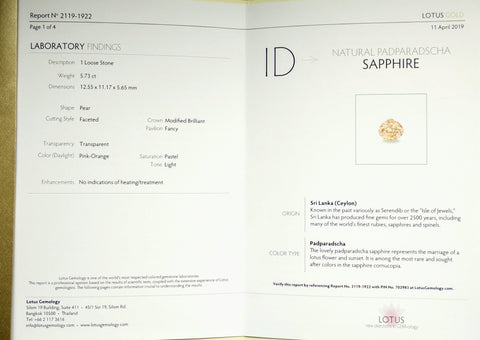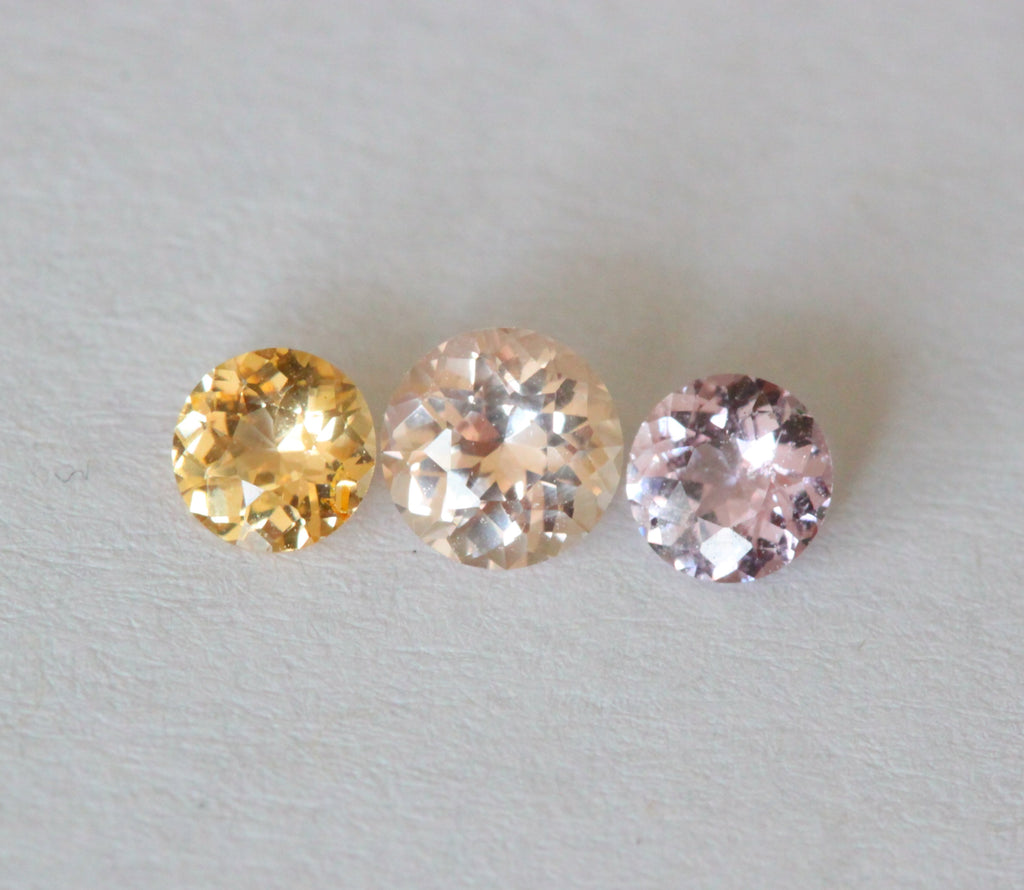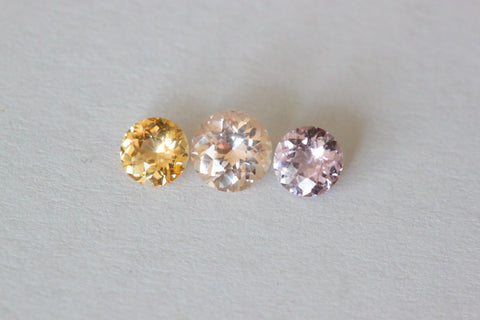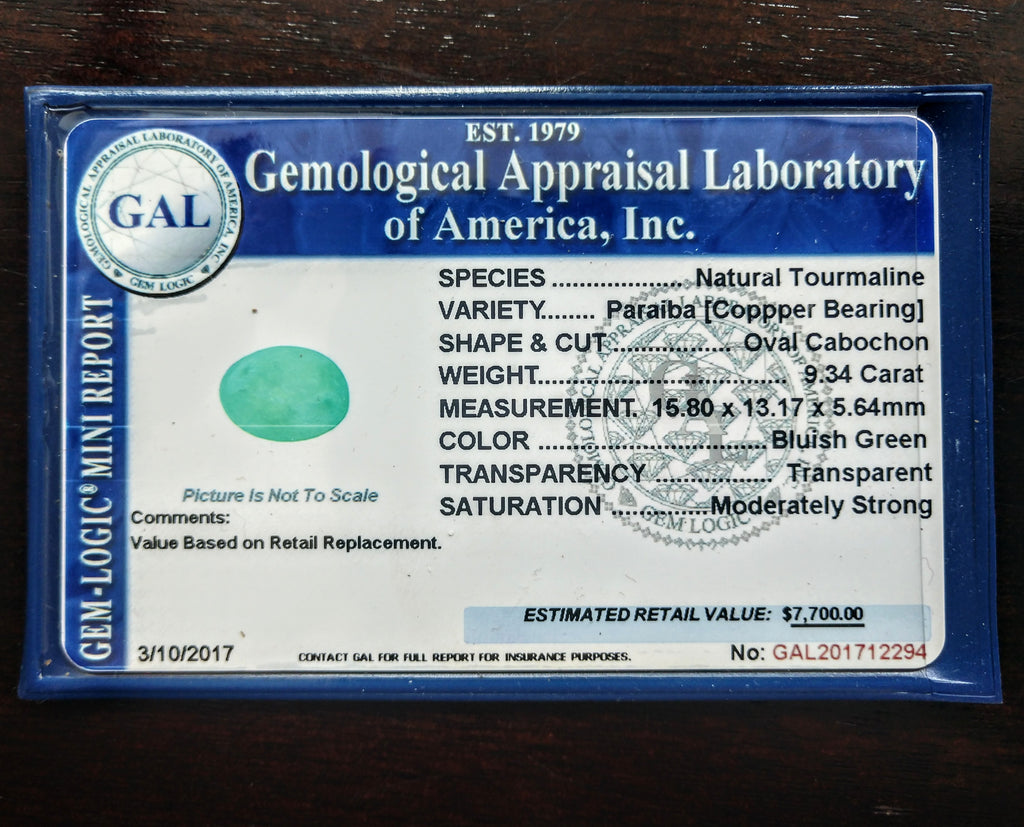Padparadscha – Lab Certification Roulette
Guest Blog by Inken Krause, Enhoerning Jewelry
Entire book chapters and countless longish essays have been written about the ideal color of Padparadscha sapphire and the cultural history of this special color descriptor so full of romantic idealization and metaphoric meaning. Now Yvonne has asked me to edit a short guest blog (emphasis on short), so I will try to work on a more practical question.
What does a sapphire look like that will, in all likelihood, be ennobled as Padparadscha by the most important American/European* gem labs?
Several labs, AGL among them, agreed that this 2 ct unheated Ceylon sapphire is a Padparadscha. The perfectly balanced mix of orange and pink leaves very little room for doubt.

Color -- Hue
Modern definitions of Padparadscha ask for a pink-orange (called type “sunrise“) or orange-pink (called type “sunset“) color. Purists tend to prefer the sunrise type. The color mixture between pink and orange should be well balanced. If either pink or orange is very weak, most labs do not grant the pad label, and any hint of brown is a deal breaker for most of them. Some labs are very strict and exclude any yellowish (not orange) or lavender-purplish (not pink) color. In my experience, the New York based AGL is rather tolerant about purplish hues, but absolutely unforgiving about brown. Of the American labs, GIA tends to be the strictest when it comes to hue (see the round stone example below).
AGL certified this 4 ct unheated Ceylon sapphire as Padparadscha, GIA disagreed and called it “pink sapphire“.
This 2 ct unheated Ceylon sapphire was certified “Pad“ by AGL, and the color is so well balanced that almost any other lab would follow. It leans slightly to the orange side, making it a sunrise Padparadscha. 
This 4 ct unheated Ceylon sapphire was certified as Padparadscha by an Asian lab, but AGL (with good reason) decided it is only a ‘light purple’ fancy sapphire, although there is indeed a very slight orange modifier.
Color -- Tone
Tone is the least critical aspect of Padparadscha color. Most labs will accept a wide range of tone (lightness/darkness), as long as the tone corresponds well to the saturation level. Higher saturation can have higher tone. A low color saturation with a high value of tone often leads to a brownish or grayish appearance of the gem. A sapphire with a strong grayish appearance will not be considered a Padparadscha by most labs.
This 2 ct unheated Ceylon sapphire was certified Padparadscha by several major labs, including AGL. It shows a slight grey modifier, but the orangey-pink color predominates in daylight. 
Color -- Saturation
Saturation is the most tricky aspect of Padparadscha certification. Almost all Western gem laboratories ask for a light (“pastel“) to medium saturation in pad sapphire. The color should be “delicate“. However, in practice, lab certification can work differently. Many labs routinely reject pink-orange/orange-pink sapphires and do not grant the desired color descriptor if they find the saturation to be too light! (Happened many times to me and my stones). However, it is very rare that they reject a sapphire as a non-pad because of too high saturation, unless there is a brownish modifier. Almost no lab can resist the beauty of an intensely to vividly saturated pink-orange/orange-pink sapphire, even if these stones do not meet their official requirements for (lower) saturation. AGL seems to be notorious for this paradox, but I have seen it on lab reports by GRS and even the highly respected Gübelin lab as well.
This 1 ct unheated Ceylon sapphire was certified by AGL as “Pale orange-pink“. Because of the “pale“ it did not pass as Padparadscha but was labeled fancy sapphire.
Color -- Stability?
The color of a Padparadscha needs to be stable and may not fade over time and/or in the absence of UV light. Color stability in pad (and other color fancy-) sapphire is a hot topic right now and deserves another blog entry of its own. In the meantime, please feel free to read some latest research here: https://www.ssef.ch/wp-content/uploads/2018/03/2018_Padparadscha_colour_stability_facette.pdf
Most of the laboratories mentioned in this text routinely do color stability tests on potential Padparadscha sapphire and do not grant the color designation if a stone does not pass. If you buy a Padparadscha these days, make sure that it comes with a reputable lab report that is not older than a year. Even the most respected laboratories did not test for Padparadscha color stability until a couple of years ago.
This 5 ct Padparadscha was tested for color stability at Lotus Gemology, although they do not explicitly mention this on the report. I hope they will start doing this on future reports. 
Geographic Origin?
For Padparadscha purists (like me) a real pad is from Ceylon (Sri Lanka) or from Burma (Myanmar). The very rare Padparadschas from Burma are incredibly beautiful. However, many mining locations produce Padparadscha sapphire, for instance Madagascar. A fair number of fancy sapphires from Madagascar do not pass the “pad test“, however, due to color stability issues. Pad-like sapphires from Umba, Tanzania, often do not get certified as Padparadscha due to brownish modifiers (or, sometimes, too much saturation).
Treatment?
Again, Padparadscha purists (like me) have their own view on things and think that only an unheated pad-color sapphire is a real Padparadscha. All of the labs mentioned in this article, however, certify heated (heat-only!) sapphire as Padparadscha, too, if the color is right. None of the labs mentioned in this article will give the precious title to sapphires that have undergone Beryllium-heating or any other invasive treatment.
Three Ceylon sapphires, all unheated/untreated. The middle one shows almost perfect Padparadscha color. The one on the left does not show enough pink. The one on the right is rather high in saturation for a Padparadscha, but shows a good balance of orange and pink (all of these are available through Cecile Raley Designs).
This 1.99 ct unheated/untreated Ceylon sapphire is currently available in Yvonne‘s Etsy shop. It is of the “sunset“ type and has a good to very good chance to be certified as Padparadscha by, for instance, AGL.

* comments made in this blog entry apply, to the best knowledge of the author, to the following gem labs: AGL, C. Dunaigre, GIA, GRS, Gübelin, IGI, Lotus Gemology, SSEF; this blog article does not make any promises about lab results for your sapphire.








